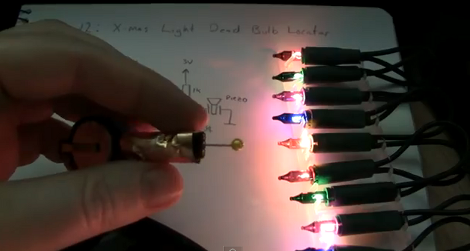
We missed 60% of it already, but luckily you can easily watch the back catalog of [Alan Yates’] 2011 Advent Calendar of Circuits. As with traditional Advent Calendars he’s got a treat for every day in December leading up to Christmas. Instead of chocolate, the treat is a video about a different electronic circuit.
We didn’t find a playlist link, but you can just head over to his YouTube channel as each day is clearly labelled in the video titles. He starts off with a current limiting voltage regulator. A couple of days later he busts out a metal detector that will be fun to play with. Day 7 brings an AM transmitter/receiver pair, and Day 12 illustrates a burnt-out Christmas light detecting tool which we’ve embedded after the break.
The sheer volume of projects he’s putting out every day is remarkable and delightful. He doesn’t even limit himself to one video a day, but has posted several ‘extra’ editions with quick, circuit demos. Continue reading “Advent Calendar Of Circuits”
















